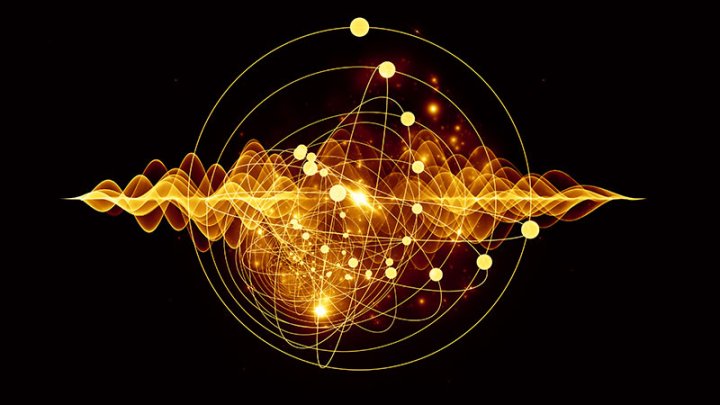The Theory of Everything: A Unified Equation for the Universe
Published:
The “Theory of Everything” is the holy grail of modern physics—a single, elegant framework that would unify all the fundamental forces of nature: gravity, electromagnetism, the strong force, and the weak force. While we don’t have a complete theory yet, physicists have made incredible progress in combining three of these forces into the Standard Model of particle physics. The image you see is a glimpse into this ongoing quest, representing the mathematical framework of quantum field theory, which combines classical field theory, special relativity, and quantum mechanics. This blog post, “The Theory of Everything,” will break down this monumental equation, explaining what each part represents and how it brings us one step closer to a complete understanding of the cosmos.
For decades, the great challenge in physics has been to reconcile Albert Einstein’s General Relativity, which describes gravity and the large-scale structure of the universe, with the Standard Model, which describes the quantum world of subatomic particles. The mathematical expression shown is a powerful summary of our current understanding, a single equation that contains the essence of three of the four fundamental forces. It is a testament to human ingenuity and our relentless drive to uncover the deepest secrets of reality. While it may look intimidating, we can break it down to understand the key components that describe everything from the behavior of electrons to the existence of the Higgs boson.
The Equation’s Core Components: A Unified Field
The equation you see, often called a Lagrangian, is a central part of quantum field theory. It is a mathematical expression that, when you apply the principles of quantum mechanics, gives you the rules for how particles and forces interact. The equation is split into several key sections, each representing a different aspect of our universe.
The Four Fundamental Forces
The first part of the equation, within the main integral, is where the forces are described. It is a Lagrangian that includes terms for:
- Gravity: The term $\sqrt{-g}(R)$ comes from General Relativity, with $R$ being the Ricci scalar that describes the curvature of spacetime. This is the part of the equation that attempts to incorporate gravity into the quantum field theory framework.
- Electromagnetism: The term $F_{\mu\nu}F^{\mu\nu}$ represents the electromagnetic force. It describes the behavior of photons and the interactions of charged particles.
- Strong Force: The term $G_{\mu\nu}G^{\mu\nu}$ describes the strong nuclear force, which holds atomic nuclei together. It is responsible for the existence of protons and neutrons.
- Weak Force: The term $W_{\mu\nu}W^{\mu\nu}$ represents the weak nuclear force, which governs radioactive decay and other subatomic processes.
This single expression elegantly bundles together the three forces of the Standard Model with a mathematical term for gravity, which is the current frontier of theoretical physics.
Matter and the Higgs Boson
The second, more complex part of the equation deals with matter and the origin of mass.
- Matter: The terms $\sum_{i} \bar{\psi}{i}D{i}\psi_{i}$ describe the fundamental particles of matter, such as quarks and leptons (like the electron). The $\psi$ (psi) symbols represent the wavefunctions of these particles.
- Higgs Boson: The term $D_{\mu}H^{\dagger}D^{\mu}H - V(H)$ describes the Higgs field and the Higgs boson. This is the crucial part of the equation that gives mass to the fundamental particles. The $H$ represents the Higgs field, and $V(H)$ is a term for the potential energy of that field.
- Yukawa Couplings: The final term, $-\lambda_{ij}\bar{\psi}{i}\psi{j}H$, known as the Yukawa coupling, describes how the Higgs field interacts with the matter particles, providing the mechanism by which they acquire mass.
This section of the equation is the heart of the Standard Model, providing a complete description of all known fundamental particles and their interactions, with the notable exception of gravity.
What This Equation Represents
The entire expression, represented by $Z$, is a path integral, a concept from quantum mechanics that sums up all possible histories or paths a physical system could take. This mathematical framework, known as quantum field theory, is a combination of several major breakthroughs in physics:
- Classical Field Theory: The idea that forces can be described by fields that permeate spacetime.
- Special Relativity: Einstein’s theory that unifies space and time, and is essential for understanding how particles behave at high speeds.
- Quantum Mechanics: The theory that describes the behavior of matter and energy at the atomic and subatomic levels, where particles can exist in multiple states at once.
This is our “theory of everything (so far),” a single, beautiful expression that encapsulates our understanding of the universe’s fundamental building blocks and the forces that govern them. It’s a powerful and elegant testament to the power of mathematics to describe the physical world.

